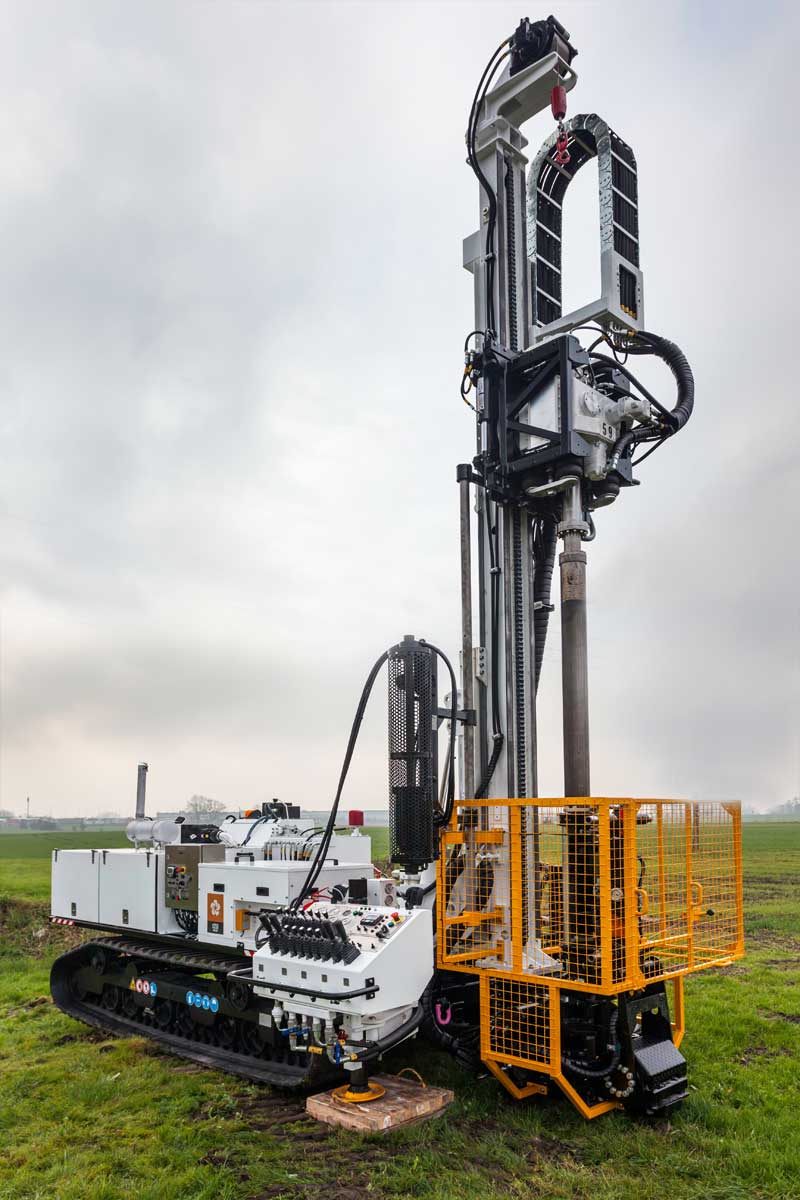OPERACIÓN NO MINERA
11 de abril de 2017
Las 5 principales ventajas de la perforación sónica sobre la perforación convencional
Este artículo apareció originalmente en la revista Perforación de Australasia.
Perforación sónica sobre perforación convencional
La tecnología de perforación sónica no es nueva, pero aún está dentro de su fase de adopción. Esto significa que los contratistas de perforación a menudo tienen encargarse de traspasar el nuevo conocimiento a sus clientes en los diferente rubros en que se desempeñan, minería, agua, medioambiente, geotécnicos y explicarles la tecnología y las ventajas que ofrece para sus proyectos.
“Estamos muy orgullosos de poder exhibir tecnología de perforación sónica de vanguardia. Ciertamente, hay mucho interés en la tecnología sónica, pero la mayoría de nuestros clientes comparten un desafío común: convencer a sus clientes de que sonic es el mejor método de perforación para un proyecto en particular ”.
Jason Higgs,gerente de desarrollo comercial para Boart Longyear
La perforación sónica es más rápida que los métodos convencionales de perforación de superficie en función de las características específicas del sitio
La tecnología Sonic utiliza resonancia de alta frecuencia para eliminar o minimizar la fricción entre el material subsuperficial que se encuentra y el cilindro de herramientas / núcleo que se está avanzando. Esto permite una penetración eficiente y una recuperación máxima del testigo en una variedad de condiciones subsuperficiales. Durante la perforación, la energía resonante se transfiere por la sarta de perforación a la cara de la broca a varias frecuencias sónicas. La rotación simultánea de la sarta de perforación distribuye de manera uniforme la energía y el impacto en la cara de la broca.
La perforación sónica puede reducir el desperdicio hasta en un 80%
La perforación sónica, que utiliza un innovador sistema de avance de la carcasa, prácticamente elimina la formación de residuos, proporcionando una mejor integridad de la muestra incluso a través de piedra caliza, dolomita, arena y otros materiales no consolidados.
Sonic Drilling ofrece información superior
Sonic Drilling proporciona una muestra de núcleo continua y relativamente inalterada de calidad y precisión incomparables a través de cualquier tipo de formación. Con menos del 1% de desviación, los perforadores, geólogos y científicos ambientales pueden estar seguros de saber exactamente de dónde viene una muestra.
Acceda a terrenos frágiles y sitios de perforación difíciles de alcanzar con el LS ™ 250 MiniSonic ™
Los equipos montados sobre orugas ofrecen una nueva movilidad en sitios remotos de perforación, su versatilidad para sitios empinados proporciona acceso más allá de la capacidad de incluso el camión más resistente. Los bloques de perforación son más compactos, de un tercio a la mitad más pequeños que los convencionales, reduciendo así la necesidad de eliminar árboles y de nivelar la tierra para proporcionar un sitio de perforación viable.

El peso y el tamaño del LS250 MiniSonic lo hacen perfecto para trabajos en los terrenos más delicados y frágiles y en entornos con limitaciones de espacio, de difícil acceso o no. Su tamaño reducido lo hace versátil para trabajar con bloques pequeños de perforación y en áreas medioambientalmente sensibles, y además requiere menos equipos de soporte.
El equipo de perforación también ofrece un peso en seco de 11 toneladas métricas con rodaduras de goma de alta flotabilidad. La baja presión sobre el suelo (4 psi) permite que el taladro acceda a terrenos más difíciles como pantanos o zonas húmedas, y sus orugas de goma de 24 pulgadas (600 mm) le permitirán flotar sobre suelos muy blandos, aumentando aún más su versatilidad y adaptabilidad a los más difíciles terrenos.
La seguridad de los trabajadores sigue siendo la principal prioridad de todos
Entre las características de seguridad del LS250 MiniSonicse cuenta una barrera de rotación con enclavamiento, bajos niveles de ruido, un mástil de volteo y una cola oscilante, además de un presentador de barras. El enclavamiento de la barrera de rotación retrasa automáticamente la rotación de la cabeza cuando la barrera está abierta.
"Queremos ayudar a nuestros clientes a obtener mejores trabajos de perforación y parte de eso es compartir con ellos el tipo de información y conocimientos que necesitan para que tengan argumentos convincentes para adoptar la perforación sónica".
Para obtener más información, comuníquese con su representante local de Boart Longyear a través de www.boartlongyear.com/minisonic o llame al +61 1800 792 972.
¿Quiere saber más? Conozca más sobre el LS250 MiniSonic




